
When newly minted college grads are ready to begin those careers they’ve worked so hard for, they should first decide where to start looking.
Graduates are often told that the world is their oyster, but it’s an awfully big world out there. Which cities are best for starting a career in one’s chosen field? A mid-sized city, one that’s not too big and not too small might be a great place to start looking — one that offers plenty of opportunity without costing you a fortune and making you feel lost in the shuffle.
OnlineDegrees.com can help. In this year’s ranking of the best mid cities to live in for new grads, we’ve ranked 141 of the nation’s metropolitan areas with populations of 150,000-750,000, according to a 10-point scale for nine different factors, ranging from monthly rental prices and median earnings for bachelor’s degree holders to job growth projections and even arts and entertainment offerings. New this year are two additional metrics: average commute time and crime rate.
List of 15 Best Midsize Cities for New Grads
Whether you’re ready to relocate or just want to know where your hometown ranks on our list, keep reading to discover the best big cities for new college graduates.
1. Chattanooga, Tennessee
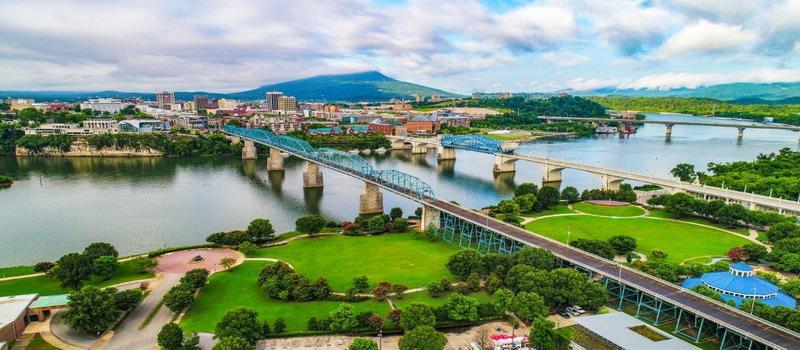
A newcomer to our ranking, Chattanooga rocketed to the top of our list thanks to several factors, including job growth that surpasses the national average, impressive business expansions, affordable housing and stunning natural beauty, nestled between the Appalachians and the Tennessee River.
In fact, Chattanooga’s business growth is projected to outperform the nation, according to a power poll of civic and government leaders. Recently, Volkswagen, Wacker Chemical and Amazon invested millions in new facilities in Chattanooga, contributing to Chattanooga’s economic growth and new status as a tech hub. Additionally, its growing reputation for being startup friendly is due to investments in city-wide internet infrastructure, an Innovation District and the Southeast’s first co-living space, the Tomorrow Building.
Featured data points:
- Percent of population between 20 and 34, 2017: 23.4%
- Median rent, 2017: $768.96
- Median earnings for bachelor’s degree holders, 2017: $54,975.09
- Average projected job growth rate statewide among jobs requiring a bachelor’s degree or above, 2016-26: 11.2%
- Art and entertainment centers per 100K population: 416
- Average commute time to work: 17.9 minutes
- Crime rate per 100K people: 13,825.31
2. Amarillo, Texas
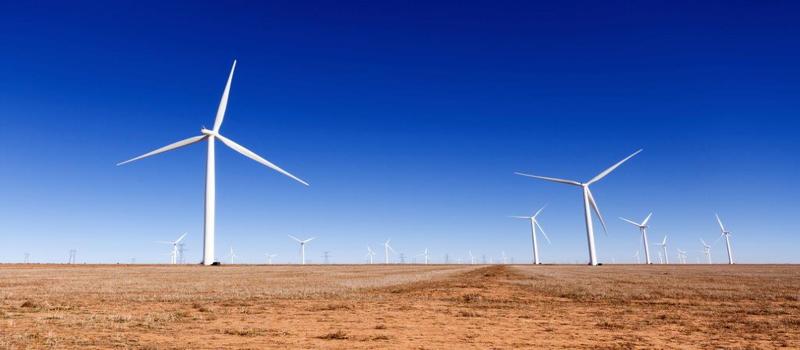
Moving from third place to second, Amarillo not only just experienced its fastest rate of job growth since 2011, but also is currently experiencing an all-time high rate of employment. In fact, economists say Texas tops the nation in creating high-quality jobs over the last three decades.
Though the economy in Amarillo as a whole is performing well, hospitality, mining, construction, education and health services jobs are experiencing the largest gains. Of course, oil is big business in Amarillo, but it’s also home to the Wildorado Wind Ranch, one of North America’s largest wind turbine manufacturing facilities. And Amarillo’s recent downtown revitalization has not only earned kudos for its use of historic buildings, but it helped to fill vacancies in the city’s core with new hotels, retail stores, bars, restaurants and housing.
Featured data points:
- Percent of population between 20 and 34, 2017: 21.6%
- Median rent, 2017: $744.78
- Median earnings for bachelor’s degree holders, 2017: $55,314.84
- Average projected job growth rate statewide among jobs requiring a bachelor’s degree or above, 2016-26: 16.6%
- Art and entertainment centers per 100K population: 285.7
- Average commute time to work: 18.3 minutes
- Crime rate per 100K people: 10,625.35
3. Madison, Wisconsin
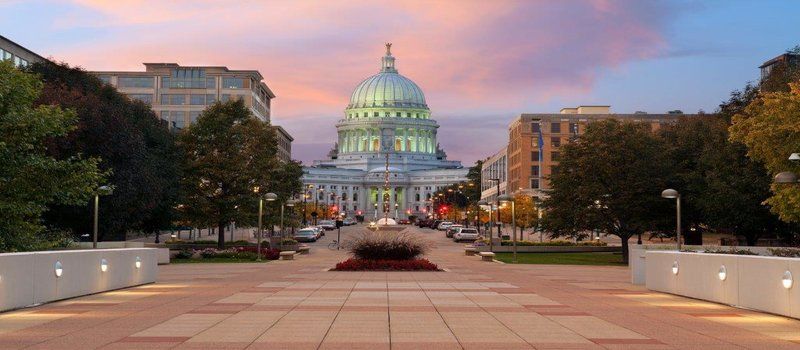
Madison moved from sixth place to third this year. Economists say Madison’s economy is one of the nation’s best, thanks to impressively high average wages, nearly rock-bottom unemployment rates, low cost of living and highly rated quality of life.
Madison is a leader in renewable energy, as evidenced by the MadiSun program, which has helped about 100 homeowners and businesses install solar power since 2012, and a more ambitious plan, called Sustainable Madison, to achieve 100 percent renewable energy and zero net carbon emissions by 2030.
It’s also an emerging digital health startup hub and is home to electronic health records giant Epic Systems as well as HealthX Ventures, a venture capital firm devoted to digital health.
Featured data points:
- Percent of population between 20 and 34, 2017: 35.1%
- Median rent, 2017: $1,103.23
- Median earnings for bachelor’s degree holders, 2017: $52,893.80
- Average projected job growth rate statewide among jobs requiring a bachelor’s degree or above, 2016-26: 6.7%
- Art and entertainment centers per 100K population: 338.51
- Average commute time to work: 19.9 minutes
- Crime rate per 100K people: 6,270.47
4. Little Rock, Arkansas
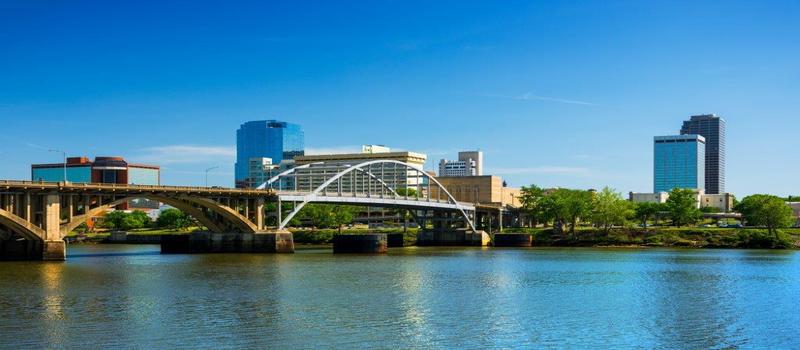
Little Rock’s convenient location in the nation’s heartland, at the crossroads of I-30 and I-40, means that 40 percent of America’s population is within a 550-mile radius. This paired with the Port of Little Rock, a designated Foreign Trade Zone and U.S. Customs Point of Entry, gives the city a leg up economically, making it appealing as a distribution and logistics hub, with such companies as FedEx Corp., UPS, Walmart and J.B. Hunt Transport, Inc. calling it home.
By far its largest employer is the Arkansas state government, employing 9.4 percent of the area’s workers, with healthcare, banking, technology, advanced manufacturing, agriculture and education rounding out the list of top-employing industries.
Featured data points:
- Percent of population between 20 and 34, 2017: 21.4%
- Median rent, 2017: $785.78
- Median earnings for bachelor’s degree holders, 2017: $50,417.80
- Average projected job growth rate statewide among jobs requiring a bachelor’s degree or above, 2016-26: 10.4%
- Art and entertainment centers per 100K population: 339.89
- Average commute time to work: 18.3 minutes
- Crime rate per 100K people: 2,632.81
5. Huntsville, Alabama
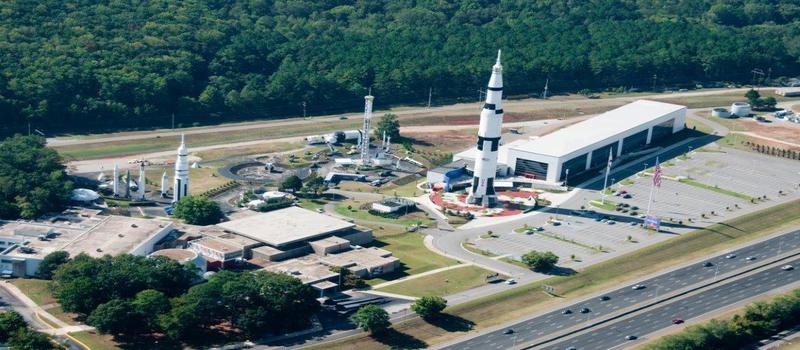
Huntsville, a newcomer to this list, is the nation’s top metro area for aerospace/defense and is home to such giants as NASA’s U.S. Space & Rocket Center and Marshall Space Flight Center as well as Boeing — both among the city’s top five employers. Graduates with STEM (science, technology, engineering and mathematics) degrees may appreciate knowing that Huntsville is one of the nation’s top centers for STEM jobs, with 16.7 percent of its workforce employed in these professions. The preponderance of these high-paying jobs may help explain why Hunstville’s median earnings are the highest on our list.
Other top employers in Huntsville include the U.S. Army, the city’s hospital and the school system. Healthcare also is thriving here; it’s home to the world’s first genomic medical clinic, where innovations are happening in cancer research.
Featured data points:
- Percent of population between 20 and 34, 2017: 22.8%
- Median rent, 2017: $709.35 (tie)
- Median earnings for bachelor’s degree holders, 2017: $68,975.76
- Average projected job growth rate statewide among jobs requiring a bachelor’s degree or above, 2016-26: 6.9%
- Art and entertainment centers per 100K population: 312.23
- Average commute time to work: 19.8 minutes
- Crime rate per 100K people: 1,427.62
6. Mobile, Alabama
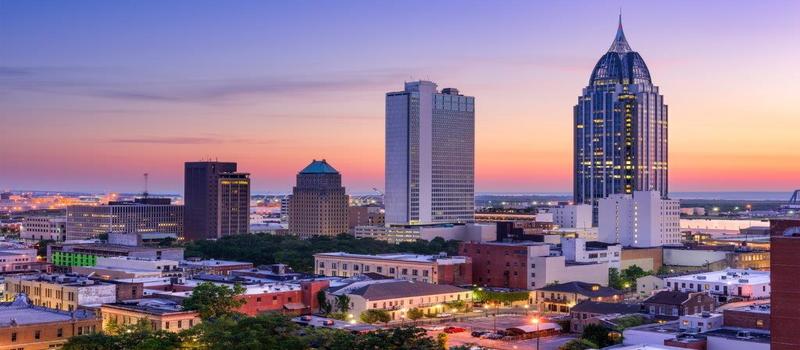
One of the six Southern cities to make this year’s list, Mobile is another newcomer, thanks to its low rental prices, relatively high earnings for bachelor’s degree holders and one of the lowest crime rates on our list.
Huntsville isn’t Alabama’s only aerospace hub. Mobile is home to the Airbus U.S. Manufacturing Facility, Airbus Engineering, SAFRAN, Continental Motors, MAAS Aviation, Aerostar and other major companies, making it an ideal destination for STEM graduates. Healthcare graduates may find that Mobile is a regional center for medical care, research and education, with such organizations as the USA Mitchell Cancer Institute and the University of South Alabama’s College of Medicine; roughly 12 percent of the workforce is employed in the healthcare sector in Mobile.
Featured data points:
- Percent of population between 20 and 34, 2017: 24.2%
- Median rent, 2017: $709.35 (tie)
- Median earnings for bachelor’s degree holders, 2017: $54,874.94
- Average projected job growth rate statewide among jobs requiring a bachelor’s degree or above, 2016-26: 6.9%
- Art and entertainment centers per 100K population: 292.21
- Average commute time to work: 21.9 minutes
- Crime rate per 100K people: 1,060.93
7. Scottsdale, Arizona
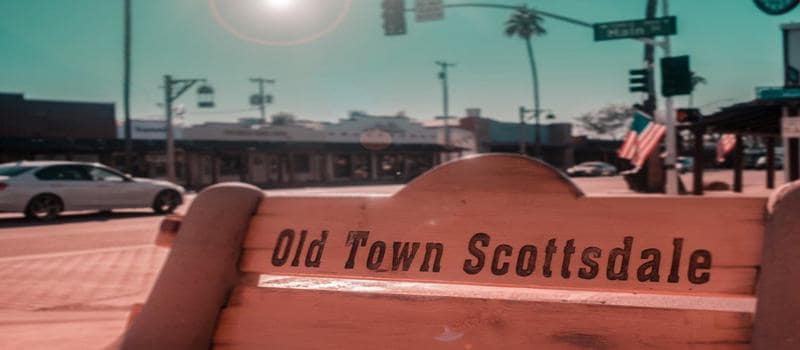
With rates of job growth and salaries for bachelor’s degree holders that are among our list’s highest, Scottsdale makes a new appearance on our list at No. 7. The Scottsdale Economic Development Strategic Plan indicates that the city’s leaders have prioritized high rates of employment and sustainable growth, improved public services and business-friendly incentives. It seems to be working, with targeted industries such as healthcare and bio-life sciences, advanced business services (finance and insurance), technology and hospitality all seeing significant employment growth. The city is home to nearly 20 percent of Arizona’s corporate headquarters.
Plus, quality of life here ranks highly, thanks to our list’s lowest crime rate and its range of recreational offerings, from golfing and hiking trails to fine dining, shopping and scenic beauty. Scottsdale is a great location for new graduates looking for a big city feeling without the big city hassles.
Featured data points:
- Percent of population between 20 and 34, 2017: 19.6%
- Median rent, 2017: $1,215.36
- Median earnings for bachelor’s degree holders, 2017: $67,983.57
- Average projected job growth rate statewide among jobs requiring a bachelor’s degree or above, 2016-26: 18.6%
- Art and entertainment centers per 100K population: 366.08
- Average commute time to work: 22.8 minutes
- Crime rate per 100K people: 328.38
8. Omaha, Nebraska
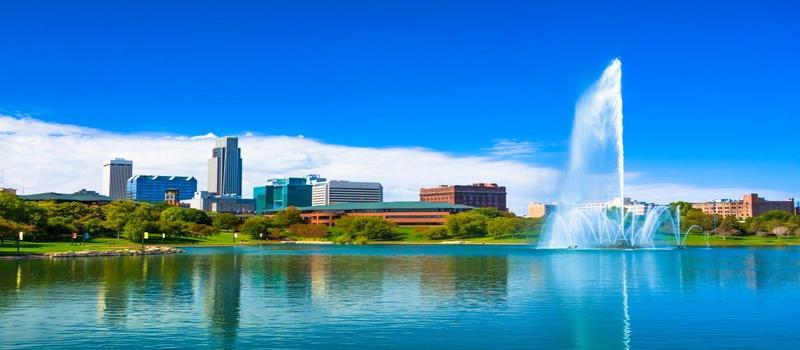
Situated in the middle of the country, Omaha is also situated in the middle of what one expert calls “a sweet spot” — earning high marks for quality of life, economic strength and affordability. Demographer David Drozd, a census expert at the University of Nevada at Omaha’s Center for Public Affairs Research says Omaha’s College World Series, U.S. Olympics Swim Trials, world-class zoo and four Fortune 500 firms makes it a standout winner among mid-sized cities.
Omaha moves from tenth to eighth place this year with low crime, great recreational offerings and a startup culture, not to mention a cost of living that’s lower than the national average. Its largest sector of employers is in healthcare, including the CHI Health System, Methodist Health System, Nebraska Medicine, University of Nebraska Medical Center and Children’s Hospital & Medical Center.
Featured data points:
- Percent of population between 20 and 34, 2017: 19.6%
- Median rent, 2017: $1,215.36
- Median earnings for bachelor’s degree holders, 2017: $67,983.57
- Average projected job growth rate statewide among jobs requiring a bachelor’s degree or above, 2016-26: 18.6%
- Art and entertainment centers per 100K population: 366.08
- Average commute time to work: 22.8 minutes
- Crime rate per 100K people: 328.38
9. Cincinnati, Ohio
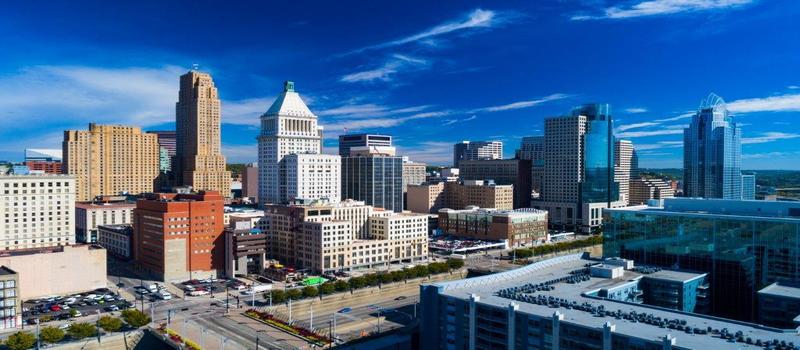
Last year, the Queen City didn’t even place on our list. This year it ranks ninth as a result of growth that outpaces the national rate and an economy that’s one of the Midwest’s largest by GDP. Its economic health is driven by diversification and large companies headquartered here, such as Kroger and Procter & Gamble. Meanwhile, housing costs in Cincinnati are low and housing is plentiful, thanks to efforts to refurbish and rent out existing older buildings.
The metro area’s largest employment sector is trade, transportation and utilities, due to its picturesque location at the confluence of the Little Miami and Great Miami rivers and international airport.
Featured data points:
- Percent of population between 20 and 34, 2017: 27.9%
- Median rent, 2017: $630.73
- Median earnings for bachelor’s degree holders, 2017: $54,498.11
- Average projected job growth rate statewide among jobs requiring a bachelor’s degree or above, 2016-26: 4.4%
- Art and entertainment centers per 100K population: 291.07
- Average commute time to work: 22.9 minutes
- Crime rate per 100K people: 13,017.37
10. Sioux Falls, South Dakota
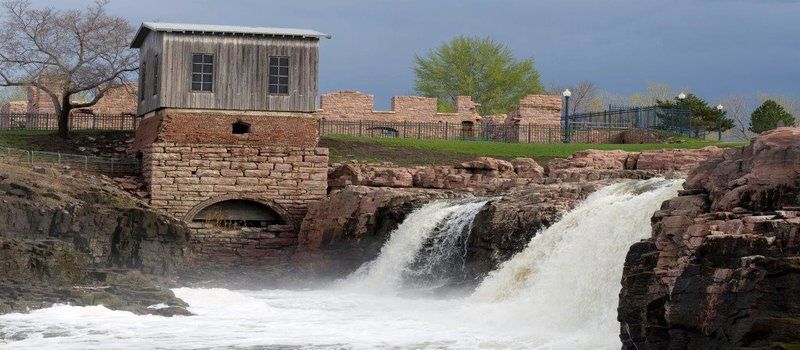
With a high concentration of arts and entertainment options, low rental prices and short commute times, the quality and affordability of life in Sioux Falls earns it a spot on this year’s list. It’s one of the fastest-growing metro areas in the Midwest, in part thanks to Citibank’s moving its entire credit-card operation to here in the 1980s, encouraging other financial companies to do the same, including First Premier. Finance is big business here.
Healthcare also thrives in Sioux Falls, home to two area hospital systems and Sanford Research. And STEM graduates may find opportunities with Madison Cyber Labs, Sanford Underground Research Facility (a state-managed physics lab) and a locally based corporate and academic research park.
Featured data points:
- Percent of population between 20 and 34, 2017: 23.7%
- Median rent, 2017: $729.73
- Median earnings for bachelor’s degree holders, 2017: $47,415.42
- Average projected job growth rate statewide among jobs requiring a bachelor’s degree or above, 2016-26: 6.8%
- Art and entertainment centers per 100K population: 308.65
- Average commute time to work: 17 minutes
- Crime rate per 100K people: 7,564.72
11. Overland Park, Kansas

One of five Midwestern cities to make our list, Overland Park, part of the Kansas City metro area, offers the benefits of a major urban area (including high wages for bachelor’s degree holders!) while still retaining small-town charm. Technology drives much of its employment, thanks to employers such as Sprint; Black & Veatch, the largest engineering firm in the Kansas City area; Netsmart Technologies; and Optiv Security.
Other important industries here include healthcare (with employers such as Overland Park Regional Medical Center, Children’s Mercy Hospital Kansas and Menorah Medical Center), pharmaceuticals (employers OptumRX and Teva), finance (Waddell & Reed Financial, US Bank and PNC Real Estate) and education (the area’s school districts are among its largest employers).
Featured data points:
- Percent of population between 20 and 34, 2017: 21.9%
- Median rent, 2017: $1,041.46
- Median earnings for bachelor’s degree holders, 2017: $65,930.15
- Average projected job growth rate statewide among jobs requiring a bachelor’s degree or above, 2016-26: 4.3%
- Art and entertainment centers per 100K population: 280.77
- Average commute time to work: 20 minutes
- Crime rate per 100K people: 4,116.64
12. Salt Lake City, Utah
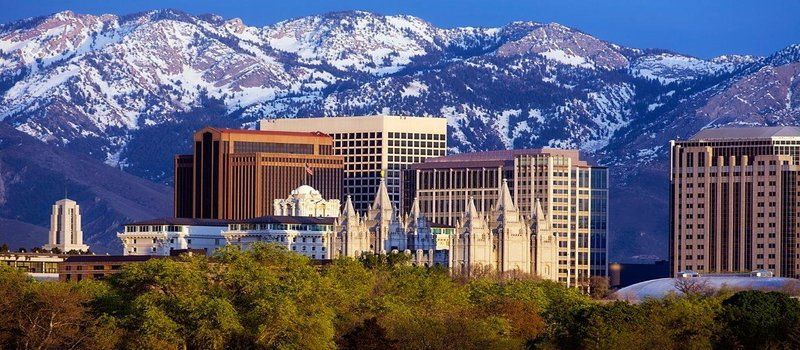
It may be surprising to learn that one of the fastest growing tech sectors in the nation is located in Salt Lake City. In fact, what is probably the state’s most well-known occupant, The Church of Jesus Christ of Latter-day Saints, also is its No. 1 employer of tech professionals. The city’s technology sector has grown at twice the national average over the last decade, supporting one in every seven jobs in Utah. Other tech employers include Zions Bancorp., Overstock.com, Western Governors University, Symantec, Goldman Sachs and UnitedHealth Group.
It also has a thriving startup economy, with business accelerators such as BoomStartup’s GenTech program offering mentorship for starting entrepreneurs. And its high concentration of young people may be connected to its impressive number of arts and entertainment offerings.
Featured data points:
- Percent of population between 20 and 34, 2017: 31.3%
- Median rent, 2017: $867
- Median earnings for bachelor’s degree holders, 2017: $46,606.20
- Average projected job growth rate statewide among jobs requiring a bachelor’s degree or above, 2016-26: 29.1%
- Art and entertainment centers per 100K population: 418.37
- Average commute time to work: 19 minutes
- Crime rate per 100K people: 20,390.43
13. Tempe, Arizona

Tempe’s making a new appearance on our list, and it may have something to do with having the highest concentration of 20- to 34-year-olds in our rankings. As home to Arizona State University and with close proximity to several other prominent colleges and universities, it offers a thriving nightlife scene and a wealth of recreational options.
But fun is just the beginning — Tempe is a great place to start a career because of its professional diversity. It has a strong financial services sector, a large number of tech companies and a few hundred manufacturers, in businesses ranging in size from small startups to Fortune 500s. Its hospitality sector also is growing, with the recent additions of three hotels and some of the state’s largest events.
Featured data points:
- Percent of population between 20 and 34, 2017: 37.6%
- Median rent, 2017: $1,063.69
- Median earnings for bachelor’s degree holders, 2017: $49,093.65
- Average projected job growth rate statewide among jobs requiring a bachelor’s degree or above, 2016-26: 18.6%
- Art and entertainment centers per 100K population: 340.49
- Average commute time to work: 21.1 minutes
- Crime rate per 100K people: 717.15
14. Lubbock, Texas
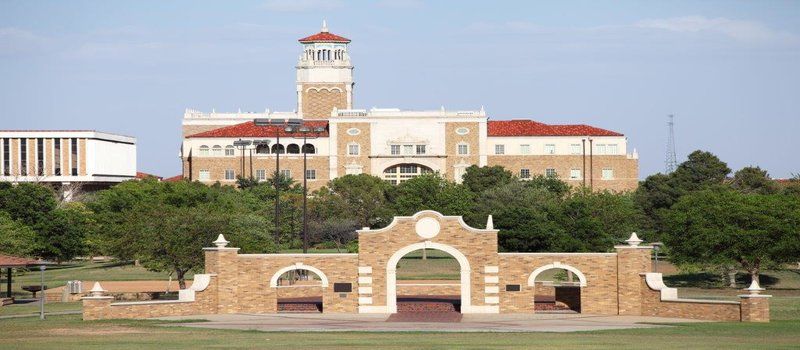
Lubbock is one of only two Texas cities to make our list this year, though it moves from fifth to 14th. Coincidentally, these were also the two cities with colleges that received $2.25 million in grants from the U.S. Department of Commerce for research and entrepreneurial activities. The West Texas city of Lubbock is home to Texas Tech, where innovative research into hurricane disaster recovery and wind science and engineering is taking place.
In fact, the college population is quite large here, with students comprising nearly 20 percent of the population. Its ideal location, in the middle of five major highways, gives it the nickname “Hub City” and also makes it a prime location for major business headquarters. And if you’re looking for a hassle-free commute, find it in Lubbock, where the average commute time is the lowest on our list.
Featured data points:
- Percent of population between 20 and 34, 2017: 28.9%
- Median rent, 2017: $773.18
- Median earnings for bachelor’s degree holders, 2017: $50,800.28
- Average projected job growth rate statewide among jobs requiring a bachelor’s degree or above, 2016-26: 16.6%
- Art and entertainment centers per 100K population: 261.93
- Average commute time to work: 16.3 minutes
- Crime rate per 100K people: 11,958.94
15. Des Moines, Iowa
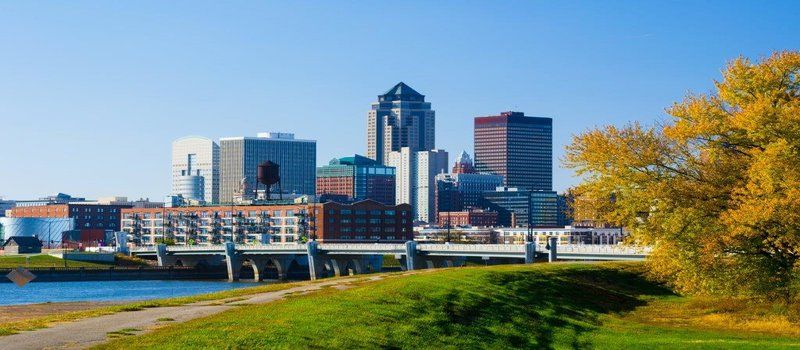
Another newcomer to our list, Des Moines, the fastest-growing metro area in the entire Midwest, is turning economists’ heads as a leading example of a near future in which there is 100 percent employment. In fact, employers are clamoring for more workers and, according to a 2018 article in The Atlantic, many are even willing to offer higher salaries and generous perks in order to find them.
Its location makes Des Moines the “Cultivation Corridor,” a hotbed of agriculture and biotech activity. More than 80 insurance companies are located here, and business or finance graduates may appreciate knowing that Des Moines has the highest concentration of insurance and financial services employment in the nation. And it’s a data hub, as home to Facebook and Microsoft data center operations.
Featured data points:
- Percent of population between 20 and 34, 2017: 23.9%
- Median rent, 2017: $781.68
- Median earnings for bachelor’s degree holders, 2017: $51,715.45
- Average projected job growth rate statewide among jobs requiring a bachelor’s degree or above, 2016-26: 8.5%
- Art and entertainment centers per 100K population: 283.67
- Average commute time to work: 18.7 minutes
- Crime rate per 100K people: 9,468.97
Methodology
For this analysis, we ranked 141 U.S. cities that had a city population of 750,000 or more according to 2017 estimates from the U.S. Census Bureau. Each city was ranked on a 10 point scale, using the following seven data points and the weights specified.
- Median monthly rent adjusted to the Cost of Living Index, American Community Survey, 2017
- Percent of housing units that are occupied by renters rather than owners, American Community Survey, 2017
- Percent of the population between the ages of 20 and 34, American Community Survey, 2017
- Median earnings for bachelor’s degree holders adjusted to the Cost of Living Index, American Community Survey, 2017
- Arts & Entertainment: The number of performing arts, spectator sports and related industries; museums and historical sites; restaurants; and bars per 100,000 residents in each metro area, U.S. Census Population Estimates, 2012; County Business Patterns, 2012
- State job growth projections: The average projected growth rate and the projected number of new jobs per 100 people in each metro area, 2016-26, Projections Central, 2016
- Unemployment rate, American Community Survey, 2017
- Average Commute time, American Community Survey, 2017
- Crime rate per 100,000 people, Uniform Crime Reporting, 2015
Methodology Sources:
- Alexander Coolidge, “Cincinnati’s economy hits $138B, outpaces US growth rate,” Cincinnati Enquirer, Sept. 18, 2018, https://www.cincinnati.com/story/money/2018/09/18/cincinnatis-economy-hits-138-b-beats-us-growth/1346290002/Annie Lowrey, “Say Hello to Full Employment,” The Atlantic, July 6, 2018, https://www.theatlantic.com/ideas/archive/2018/07/hello-full-employment/564527/
- Art Raymond, “Who’s hiring the most tech workers in Salt Lake City? The answer may surprise you,” Deseret News, March 17, 2019, https://www.deseretnews.com/article/900060928/whos-hiring-the-most-tech-workers-in-salt-lake-city-the-answer-may-surprise-you/
- Becker’s Health IT & CIO Report, “Thriving outside of Silicon Valley: 9 other digital health startup hubs to know,” Sept. 27, 2016, https://www.beckershospitalreview.com/healthcare-information-technology/thriving-outside-of-silicon-valley-9-other-digital-health-startup-hubs-to-know/
- Charles S. Gascon, Peter B. McCrory, “Metro Profile: Long-Resilient Little Rock Faces Uncertain Pace of Recovery,” Federal Reserve Bank of St. Louis, January 2014, https://www.stlouisfed.org/publications/regional-economist/january-2014/longresilient-little-rock-faces-uncertain-pace-of-recovery
- “Cincinnati – Ohio, United States,” Encyclopaedia Britannica, Feb. 15, 2019, https://www.britannica.com/place/Cincinnati
- Cindy Gonzalez, “Omaha lands in ‘sweet spot’ of rankings for economy, quality of life and housing affordability,” Omaha World-Herald, June 21, 2016, https://www.omaha.com/money/omaha-lands-in-sweet-spot-of-rankings-for-economy-quality/article_ac3a75f6-eec0-5937-9bc3-0041b8a4ffe0/
- Dave Flessner, “Local leaders expect Chattanooga economy to outperform the nation in 2019,” Times Free Press, Feb. 21, 2019, https://www.timesfreepress.com/news/business/aroundregion/story/2019/feb/21/local-leaders-expect-chattanoogeconomy-outper/489203/
- Dean Mosiman, “Madison weighs pricey plan for 100 percent renewable energy,” Wisconsin State Journal, March 18, 2019, https://madison.com/wsj/news/local/govt-and-politics/madison-weighs-pricey-plan-for-percent-renewable-energy/article_da9582e7-907b-52c9-8aba-256551fc61fc/
- Drew Powell, “Center City of Amarillo recognized for downtown growth,” ABC 7 News, March 1, 2019, https://abc7amarillo.com/news/local/center-city-of-amarillo-recognized-for-downtown-growth
- Economic Development, City of Little Rock, accessed March 19, 2019, https://www.littlerock.gov/city-administration/city-managers-office/divisions/economic-development/
- Erin Cunningham, “How Huntsville has Become a Top U.S. STEM Center,” StateTech, accessed Feb. 28, 2019, https://statetechmagazine.com/article/2017/09/how-did-huntsville-become-fastest-growing-tech-hub-government
- Industry Clusters, Mobile Chamber of Commerce, accessed Feb. 28, 2019, https://mobilechamber.com/economic-development/doing-business-in-mobile/industry-clusters/
- Jeffrey Robb, “Omaha’s low cost of living was once its economic superpower. That’s no longer true,” Omaha World-Herald, March 8, 2019, https://www.omaha.com/money/omaha-s-low-cost-of-living-was-once-its-economic/article_462d9d36-2497-545b-9c62-62e29dcece8f/
- Jim Cunningham, “Overland Park development stimulates area economy, attracts new residents,” KMBZ 98.1 FM, Aug. 16, 2018, https://kmbz.radio.com/articles/overland-park-development-stimulates-area-economy-attracts-new-residents
- Judy Newman, “Economists give high marks to Madison’s economy, but say Wisconsin’s growth lags,” Wisconsin State Journal, Jan. 23, 2018, https://madison.com/wsj/business/economists-give-high-marks-to-madison-s-economy-but-say/article_23307c89-5e57-551a-868b-25e1d6ad891a/
- Justin Fox, “Why Sioux Falls Is Booming,” Bloomberg.com, Oct. 2, 2018, https://www.bloomberg.com/opinion/articles/2018-10-02/south-dakota-s-sioux-falls-can-teach-the-u-s-about-growth
- Key Industries, Greater Des Moines Partnership, accessed March 20, 2019, https://www.dsmpartnership.com/growing-business-here/key-industries
- “Largest Employers,” Omaha World-Herald, July 31, 2016, https://www.omaha.com/special_sections/metro-guide/workplaces/largest-employers/article_e2e7e18f-f4b1-5857-bb46-1b251c790e1d/
- Leading Employers, Overland Park Kansas Chamber of Commerce Economic Development Council, accessed March 20, 2019, https://www.opchamber.org/economicdevelopment/leading-employers/
- Maggie Glynn, “Amarillo Economy Recognizes Accelerated Growth in 2018,” MyHighPlains.com, Aug. 22, 2018, https://www.myhighplains.com/news/local-news/amarillo-edc-local-economy-growing-faster-than-national-economy-1/1388419555
- Marc Eisen, “The Two Wisconsins,” Isthmus, Oct. 12, 2017, https://isthmus.com/news/cover-story/booming-dane-county-leads-the-state-economic-recovery-but-small-towns-and-milwaukee-are-hurting/
- Michael Cantu, “City of Growth: Student population adds to Lubbock economy, development to come to city,” Daily Toreador, Jan. 18, 2017, http://www.dailytoreador.com/news/city-of-growth-student-population-adds-to-lubbock-economy-development/article_2cd02612-ddfa-11e6-a3da-476cb0e6d3ad/
- Mike Pare, Dave Flessner and Sunny Montgomery, “Five trends for 2019 likely to reshape Chattanooga’s economy,” Times Free Press, Jan. 1, 2019, https://www.timesfreepress.com/news/edge/story/2019/jan/01/whats-ahead-2019/485565/
- Polina Marinova, “One of America’s Most Startup-Friendly Cities is in Tennessee,” Fortune, May 8, 2017, http://fortune.com/2017/05/08/tech-startup-innovation-chattanooga-tennessee/
- Reagan Hales, “5 Factors That Are Fueling Amarillo’s Fast Economic Growth,” Amarillo Economic Development Corp., Sept. 22, 2016, https://www.amarilloedc.com/blog/5-factors-that-are-fueling-amarillos-fast-economic-growth
- Sarah Self-Walbrick, “Amarillo, Lubbock programs receive grants from U.S. Department of Commerce,” Lubbockonline.com, March 15, 2019, https://www.lubbockonline.com/news/20190315/amarillo-lubbock-programs-receive-grants-from-us-department-of-commerce
- “Scottsdale – a top location to live and work,” City of Scottsdale Economic Development, accessed March 20, 2019, https://www.choosescottsdale.com/about/why-scottsdale
- “Scottsdale named No. 1 city for jobs in U.S.,” Arizona Business Magazine, Jan. 21, 2019, https://azbigmedia.com/scottsdale-named-no-1-city-for-jobs-in-u-s/Sierra Ciaramella, “Tempe named best city in state to launch career,” Chamber Business News, accessed March 20, 2019, http://chamberbusinessnews.com/2018/09/20/tempe-named-best-city-in-state-to-launch-career/
- Targeted Industries, Little Rock Regional Chamber, accessed March 19, 2019, https://www.littlerockchamber.com/economic-development/locate-or-expand/targeted-industries/
- Tony Semerad, Utah’s tech sector now accounts for more than 300,000 jobs in the state, a new study finds,” The Salt Lake Tribune, Feb. 26, 2019, https://www.sltrib.com/news/2019/02/25/utahs-tech-sector-now/
- “Top 10 FAQs About Lubbock,” VisitLubbock.org, May 5, 2017, https://www.visitlubbock.org/top-10-faqs-about-lubbock/
- 2015 Economic Development Strategic Plan, City of Scottsdale Economic Development, Feb. 23, 2018, https://www.choosescottsdale.com/data/data-reports/2015-Economic-Development-Strategic-Plan_s2_p26581
